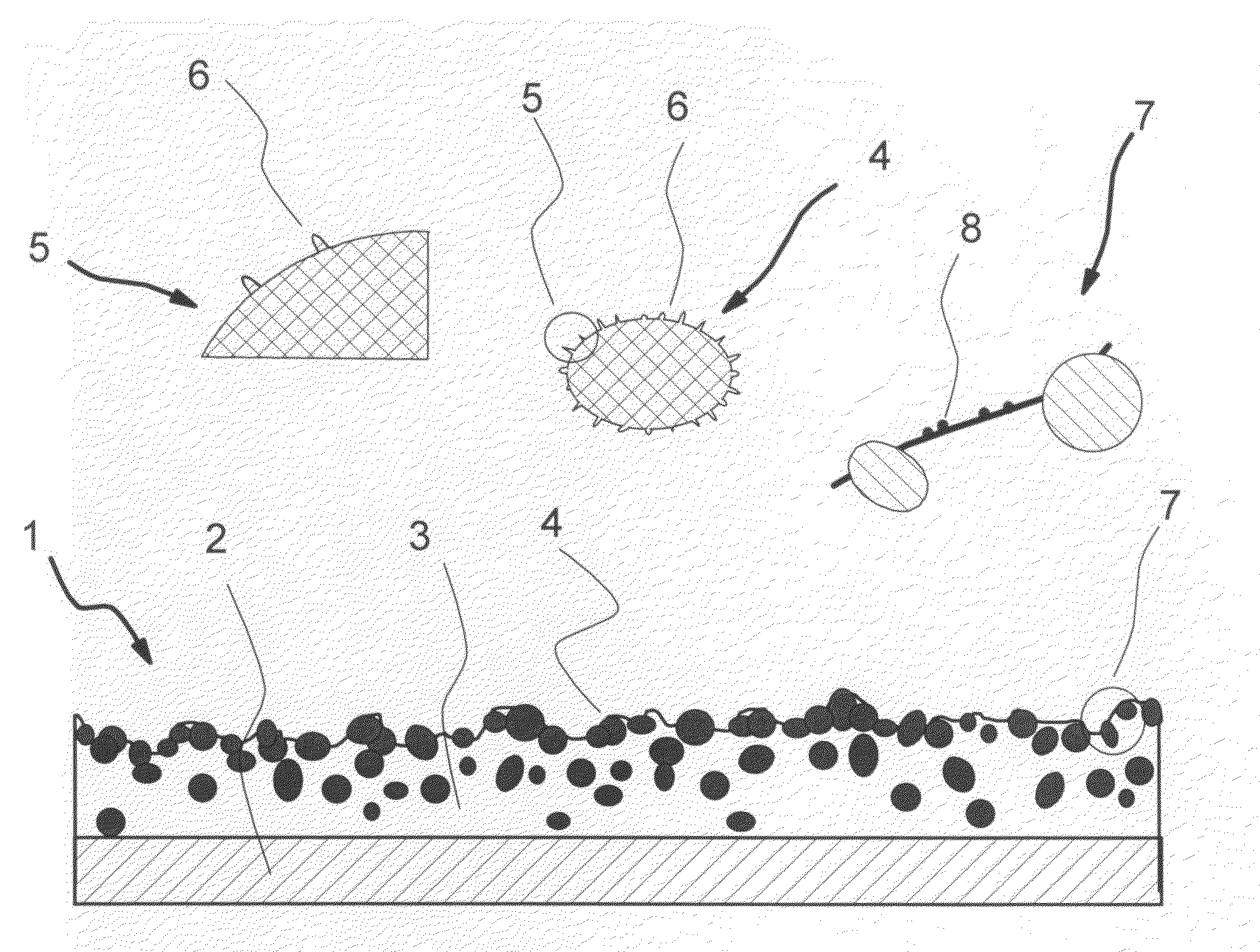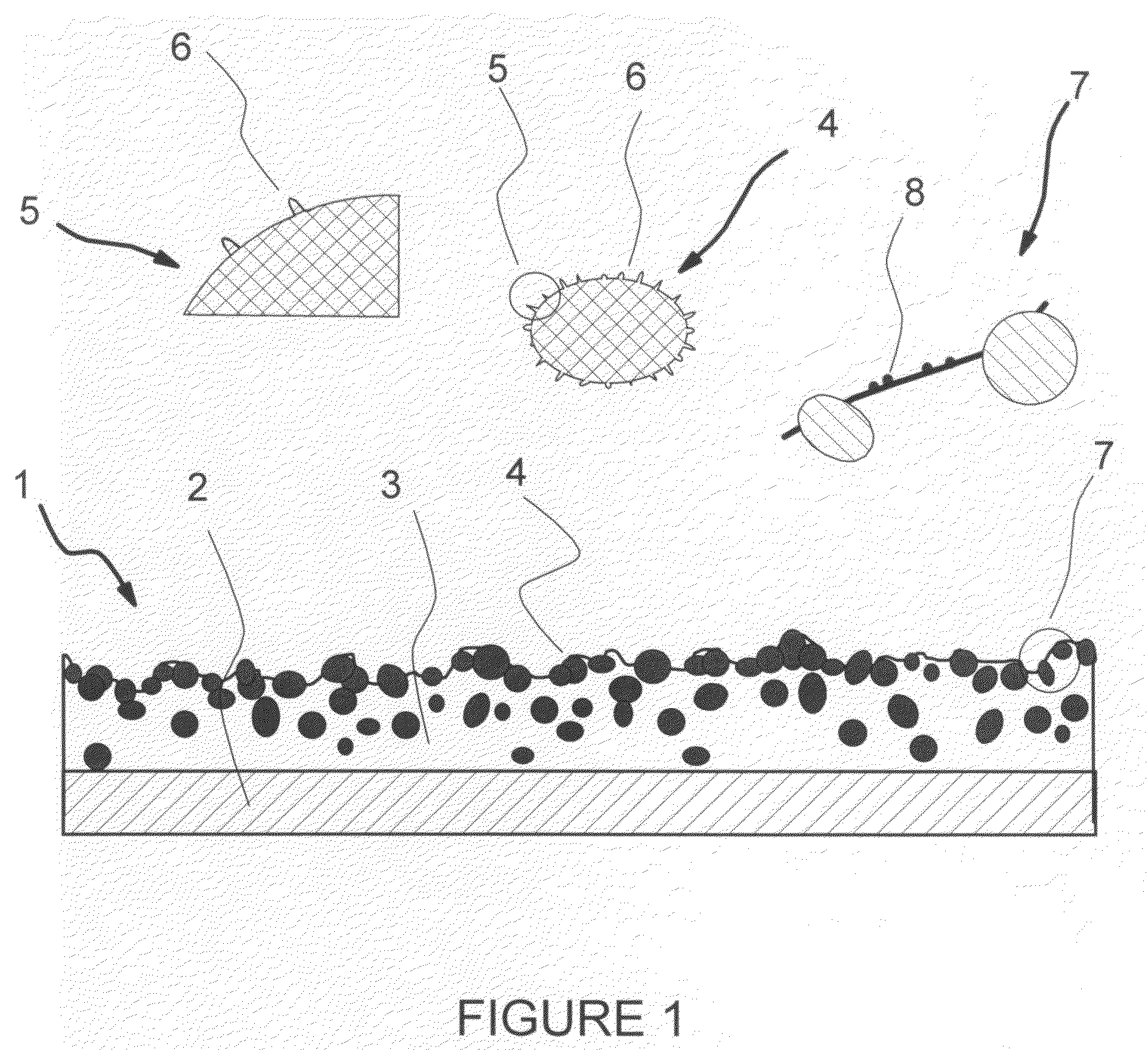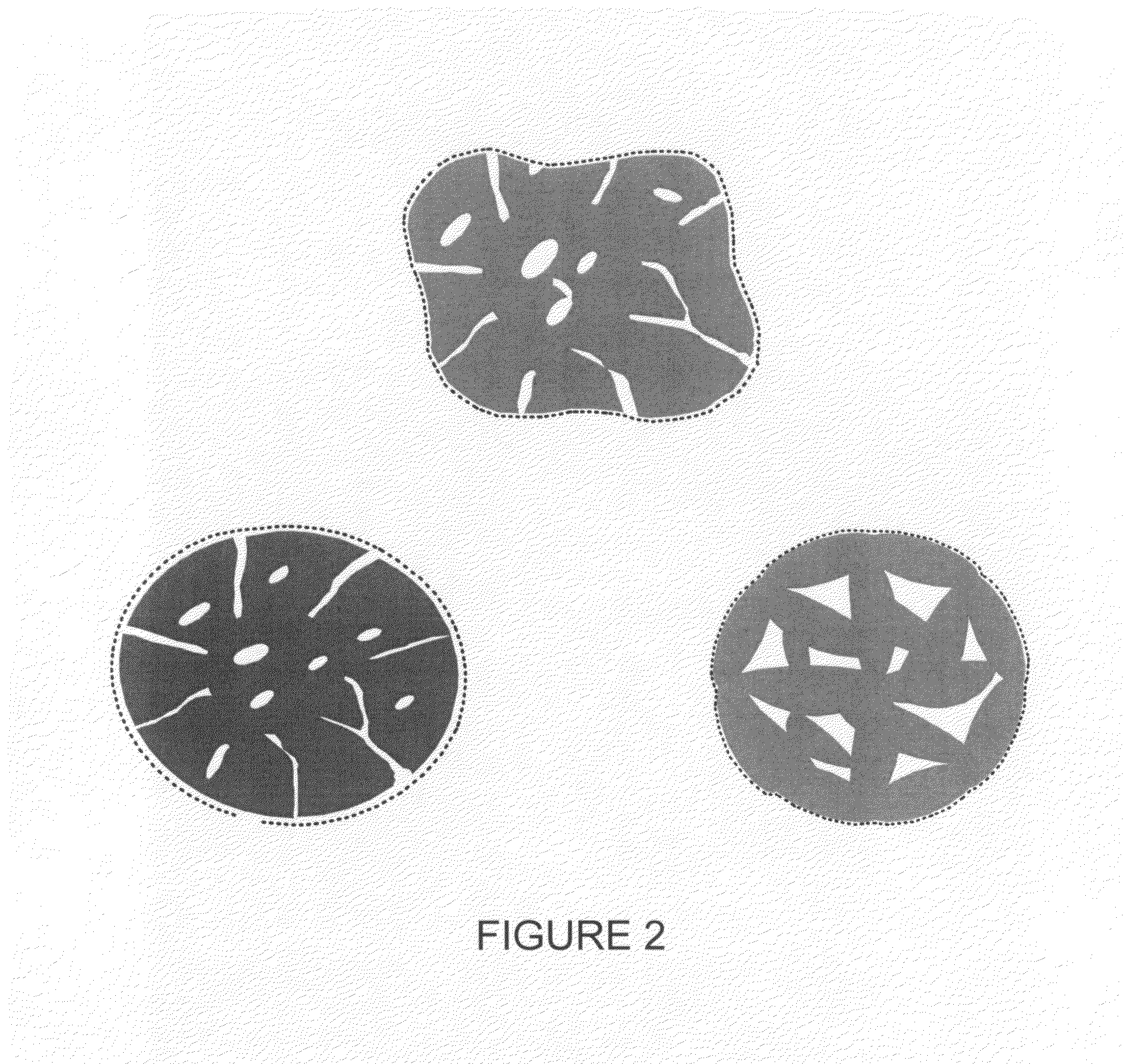Compositions and processes for producing durable hydrophobic and/or olephobic surfaces
a technology of hydrophobic and/or olephobic surfaces, applied in the direction of pretreatment surfaces, tyre parts, group 4/14 element organic compounds, etc., can solve the problems of surface wetting undesirable, metal substrate protective coatings may fail, hydrophobicity may hold, etc., to protect the nano hydrophobic structure, reduce contact area, and strong mechanical durability of hydrophobicity
- Summary
- Abstract
- Description
- Claims
- Application Information
AI Technical Summary
Benefits of technology
Problems solved by technology
Method used
Image
Examples
example 1
[0124]Production of Hydrophobic Surface with Conglomerates of Pre-Bonded Nano-Size Hydrophobic Particles
[0125]35% wt of nano-size hydrophobic particles, Aerosil® R815S is mixed with 65% wt. of a pre-made polyester TGIC (Triglycidyl Isocyanurate) clear coat powder coating (with a volume mean particle size of about 5 micrometers) in a laboratory high-shear mixer. The mixture is subsequently passed through a dual-drum press to get the mixture tightly packed in a form of brittle chips. Then the chips are heated up to about 200° C., the curing temperature of the clear coat, for 5 minutes. After the cured chips cool down, they are ground in a grinding unit to obtain the conglomerates of a volume mean size of 15 to 25 micrometers, which are composed of pre-bonded Aerosil® R815S particles and the bonding material.
[0126]Conglomerates of pre-bonded Aerosil® R815S particles prepared as described above, are dry-blended into the same powder coating, polyester TGIC clear coat, of a larger volume ...
example 2
[0128]Production of Hydrophobic Surface with Conglomerates of Pre-Bonded Nano-Sized Hydrophobic Particles
[0129]In this example, the method used was the same as described in Example 1 except that the bonding material used herein was an acrylic clear coat, different from the powder coating that the conglomerates were to be mixed in.
[0130]The finished surface demonstrates super-hydrophobicity with a contact angle of CA=162°. The wet cloth rubbing test showed that it survived 1600 rubs with a ΔCA<10°. The high pressure water test showed that it survived 195 seconds before a temporary failure. After, the failed spot dried up at ambient environment, and the hydrophobicity recovered with a ΔCA<4°.
example 3
[0131]Production of Hydrophobic Surface with Hydrophobic Glass Beads
[0132]Hydrophobic glass beads are prepared according to the two-step procedure described earlier. The specific ratios used in this example are:[0133]a) the amount of the fumed silica added is 10% of the TEOS by mass;[0134]b) the ratio of silica sol-gel to glass beads is 2 ml:1 g; and[0135]c) the ratio of hydrophobicizing solution to glass beads is 2 ml:1 g.
20% wt of hydrophobic glass beads were dry-blended into a black non-TGIC primid polyester powder coating of about 25 micrometers, in a laboratory high-shear mixer, then screened with a 45 micron mesh sifter. This process gave the hydrophobic primed polyester powder coating. Then this hydrophobic powder coating was applied to a steel test panel and cured at 200° C. for 10 minutes.
[0136]The finished surface demonstrated hydrophobicity with a contact angle of CA=131°. The wet cloth rubbing test showed that it survived 4200 rubs with a ΔCA<10°. The high pressure water...
PUM
| Property | Measurement | Unit |
|---|---|---|
| volume mean particle size | aaaaa | aaaaa |
| diameter | aaaaa | aaaaa |
| volume mean particle size | aaaaa | aaaaa |
Abstract
Description
Claims
Application Information
 Login to View More
Login to View More - R&D
- Intellectual Property
- Life Sciences
- Materials
- Tech Scout
- Unparalleled Data Quality
- Higher Quality Content
- 60% Fewer Hallucinations
Browse by: Latest US Patents, China's latest patents, Technical Efficacy Thesaurus, Application Domain, Technology Topic, Popular Technical Reports.
© 2025 PatSnap. All rights reserved.Legal|Privacy policy|Modern Slavery Act Transparency Statement|Sitemap|About US| Contact US: help@patsnap.com



